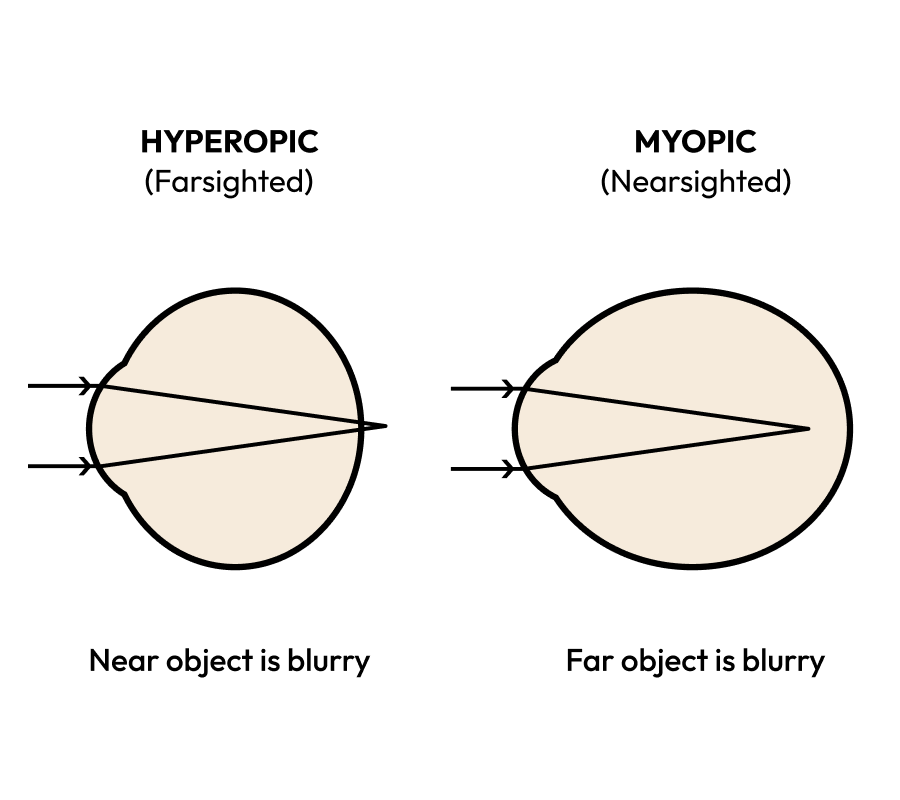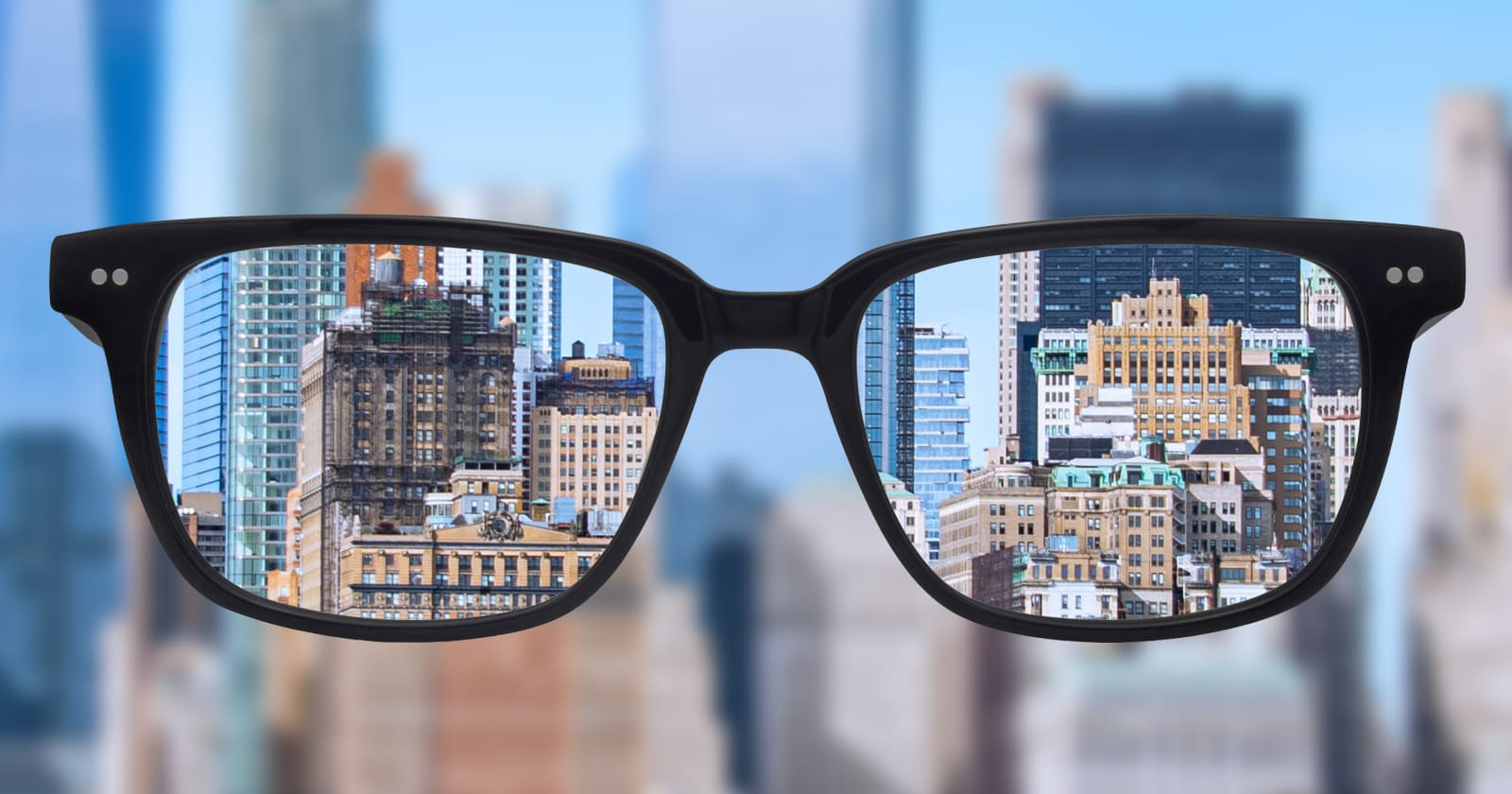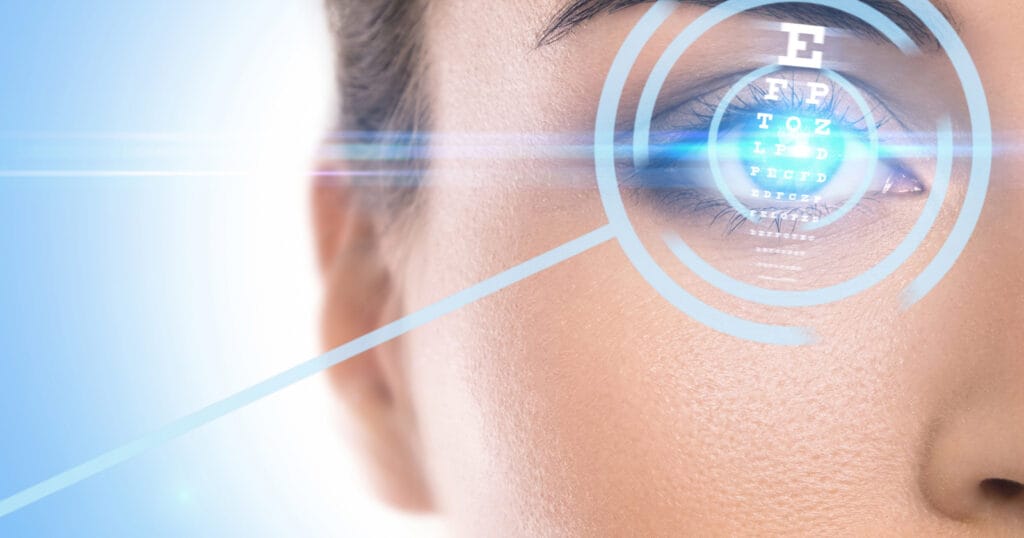Ever wondered about the difference between nearsighted and farsighted? Well, you’ve come to the right place! Let’s get the basics down: The nearsighted definition is a condition that makes it difficult for people to see in the distance. The farsighted definition, on the other hand, is a condition that makes it difficult to see up close. While these conditions can cause a person some issues with their vision, they’re nothing to be concerned with! Luckily, they’re both relatively treatable eye conditions.
We’ll give you a thorough rundown of each condition to help you learn more about nearsighted vs farsighted, as well as help you determine which condition you have and what you can do about it.
What is nearsighted?
A person with nearsightedness will find it difficult to see objects at a distance. Nearsightedness develops when the refractive power of the crystalline lens of the eye gets too strong, causing light to concentrate in front of the retina. As a response, light rays focus on an area between 24 and 30 cm away from the eye instead of on the retina directly. This makes distant objects appear blurry and out of focus, while nearer objects remain clear.
Nearsightedness, or myopia, is produced by a mix of biological and environmental causes. It can develop gradually or suddenly, and it usually worsens during infancy and adolescence. It can also be passed down through families. If you have nearsightedness, one or both of your parents most likely do as well. Your way of living may also be a factor in the disease. For example, if you do a lot of close-up activities with your eyes, like reading or working on a computer, you may develop nearsightedness.
What is farsighted?
A person with farsightedness is able to see distant objects more clearly than nearby objects. This can be caused by a misshapen cornea (the transparent layer at the front of the eye), or the eyeball being too small, resulting in a weakened focusing strength. These problems make it impossible for light to concentrate directly on the retina. Instead, light concentrates behind the retina, making close-up objects appear blurry.
Farsightedness is also known as hyperopia, and most individuals are born with it, but it may not be noticeable or cause vision problems until they become older. While there is no obvious pattern of direct inheritance, having a first-degree family member with the condition (such as siblings or parents) increases your risk.
How to determine if you’re farsighted vs nearsighted?
To determine whether you’re nearsighted vs farsighted, you have to first understand a few key distinctions.
Nearsighted symptoms include:
- Blurry vision while looking at far objects
- Need to squint or partially close the eyelids to see properly
- Headaches caused by eyestrain
- Difficulty seeing when driving a car
Farsighted symptoms include:
- Need to strain eyes to see anything up close
- Blurry vision while looking at close-up text or objects
- Achy or burning sensation around eyes
- Headaches after reading or performing tasks that require up-close focus
Ready to do a quick test to determine if you’re nearsighted or farsighted?
To begin, take a few minutes to rest your eyes by diverting your gaze from any devices, or closing them for a short period of time. Then, try reading a few pages from a book.
- Do the words appear hazy?
- Do you get a headache as a result of it?
If you said yes, you might be farsighted.
Now, try staring at anything in the distance from approximately 10 feet away. For example, a street sign or a picture on a wall.
- Are you having trouble seeing words and images?
- Can you see them well enough to read or differentiate them?
If you said yes, you might be nearsighted.
If you have trouble seeing objects both close and far away, you may be both nearsighted and farsighted. This is possible if each of your eyes develops its own condition. In fact, each eye can be nearsighted or farsighted to varying degrees.
Nearsighted
Farsighted
Is it better to be nearsighted or farsighted?
Understanding the difference between being nearsighted and farsighted includes acknowledging that neither is worse, and it all relies on the degree of the condition.
Being nearsighted may be easier if you frequently need to notice little details, such as when working in an office. On the other hand, if you frequently need to view far objects, such as while driving, being farsighted may be more convenient.
Luckily, both conditions are manageable and can be readily corrected with prescription glasses, so if you have any of the two conditions, your eye doctor may do an examination and recommend corrective eyewear that will help your vision and meet your specific needs.
Do I need glasses if I’m farsighted or nearsighted?
People who are farsighted or nearsighted may need glasses depending on the severity of their conditions, but most people who have either will find that eyeglasses are the primary choice for correcting their vision, and avoiding it getting worse. Whichever of these two conditions you have, we can provide you with eyeglasses that are not only functional but also a perfect fit and comfortable for everyday use.
What’s the difference between farsighted and nearsighted glasses?
Farsighted glasses magnify objects by making the lens bigger in the center and narrower at the edges. The more magnification you observe, the higher the power of the glass. This also applies to people’s eyes. When you look at someone who has highly farsighted glasses, their eyes appear bigger. A farsighted lens is represented by the word “plus,” which indicates that the eyes of the person require extra focus. To see clearly, you must “add” focusing power to the eye.
While nearsighted glasses make a person’s eyes appear smaller and serve as a “minifying” lens, making visuals appear smaller. The middle of the nearsighted lens is narrower, while the corners are thicker. These feature a minus sign in front of them to show that they detract the eye’s focusing ability, enabling people to see more clearly.
Need help correcting your nearsighted or farsighted vision? We can help you buy glasses online easily! Choose your frame and add your prescription, and we’ll do the rest! Not happy with your order? No worries. 14-Day Free Returns make buying glasses online easier than ever.










